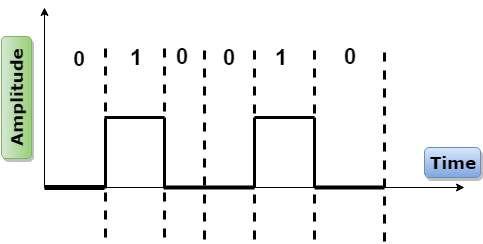Digital Transmission

Digital transmission refers to the process of sending digital data (information represented in discrete form, such as binary code) over a communication channel. This type of transmission is essential for various forms of communication, including telecommunications, computer networks, and the internet. Unlike analog transmission, which involves the continuous representation of information, digital transmission encodes data into discrete bits, typically in the form of 0s and 1s.
Here are some key concepts related to digital transmission:
Binary Representation: Digital data is represented using a binary system, where each piece of information is expressed as a combination of 0s and 1s. This binary code is the fundamental language of computers and digital communication.
Data Rate (Bit Rate): The speed at which digital data is transmitted is measured in bits per second (bps) or a higher unit like kilobits per second (Kbps), megabits per second (Mbps), or gigabits per second (Gbps). The data rate determines how much information can be transmitted in a given time period.
Modulation: In many cases, digital data is modulated onto an analog carrier wave for transmission. This process is known as modulation. Modulation techniques include amplitude modulation (AM), frequency modulation (FM), and phase modulation (PM). These techniques allow for the efficient use of the available bandwidth.
Multiplexing: Multiple digital signals can be combined and transmitted over the same channel through a process called multiplexing. Time-division multiplexing (TDM) and frequency-division multiplexing (FDM) are common multiplexing techniques.
Error Detection and Correction: Digital transmission systems often include mechanisms for detecting and correcting errors that may occur during transmission. Error detection codes (such as checksums) and error correction codes (such as Reed-Solomon codes) help ensure the accuracy of transmitted data.
Digital Modulation Schemes: Various modulation schemes are employed in digital communication to encode digital information onto carrier waves. Examples include phase-shift keying (PSK), amplitude-shift keying (ASK), and frequency-shift keying (FSK).
Digital Signal Processing (DSP): Digital signals can be processed using specialized algorithms and hardware in the digital domain. Digital signal processing techniques are employed to enhance, filter, or manipulate digital signals.
Protocols and Standards: Various communication protocols and standards govern digital transmission in different applications. These standards ensure compatibility and interoperability between devices and systems.
Digital transmission has become the backbone of modern communication systems, enabling the rapid and reliable exchange of information in various forms, including voice, video, and data. It is a fundamental aspect of telecommunications and networking technologies.
Thank you.